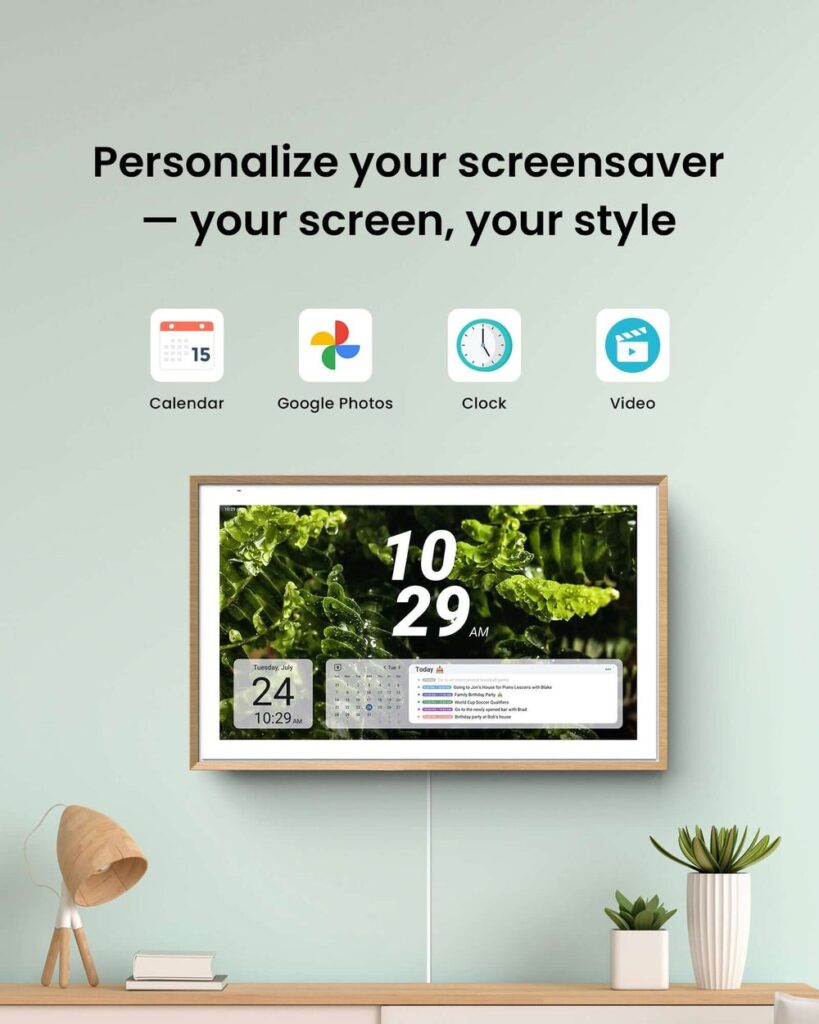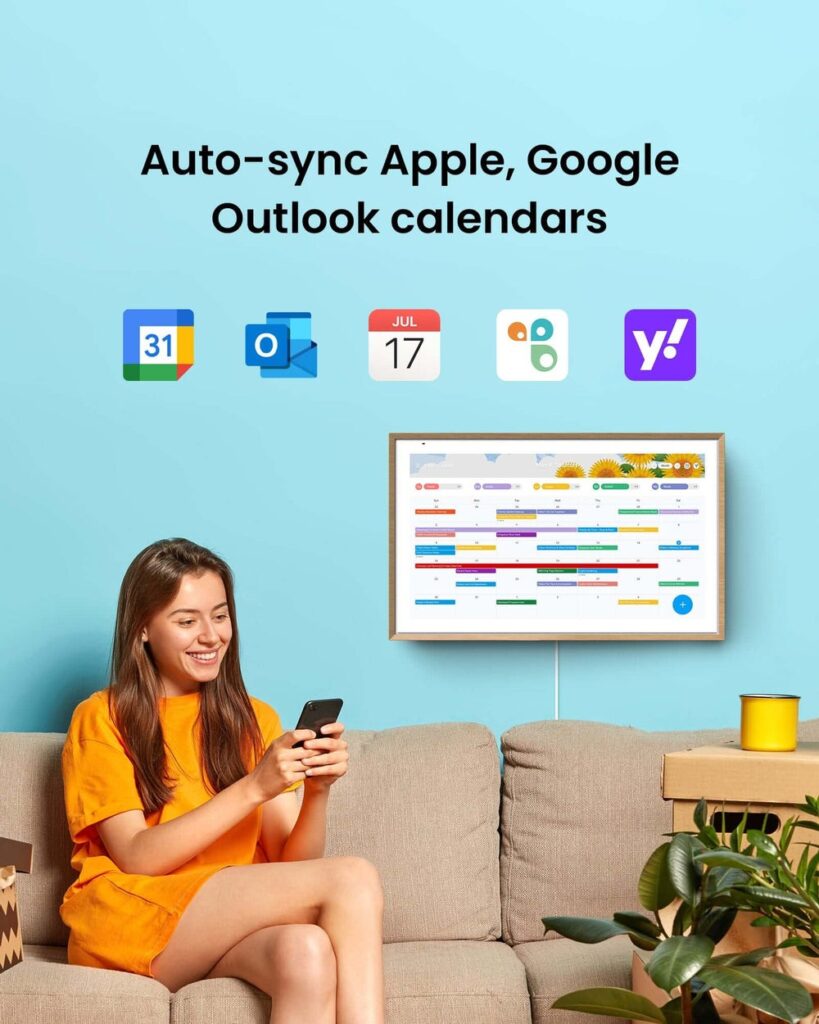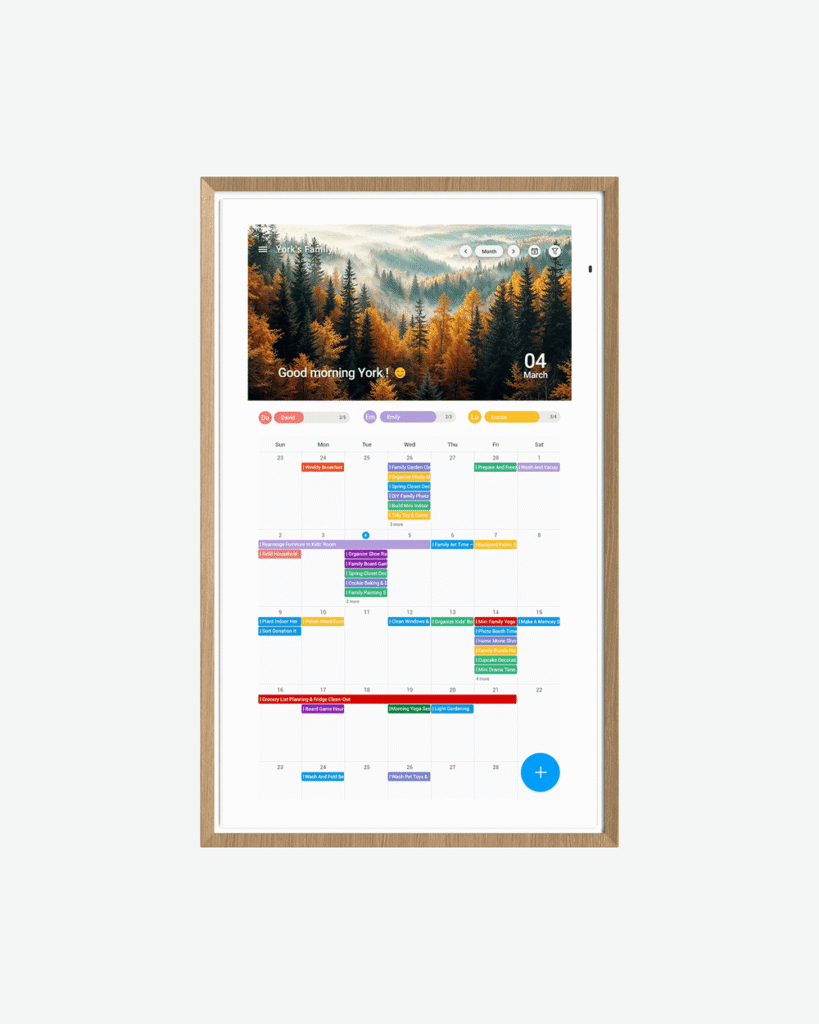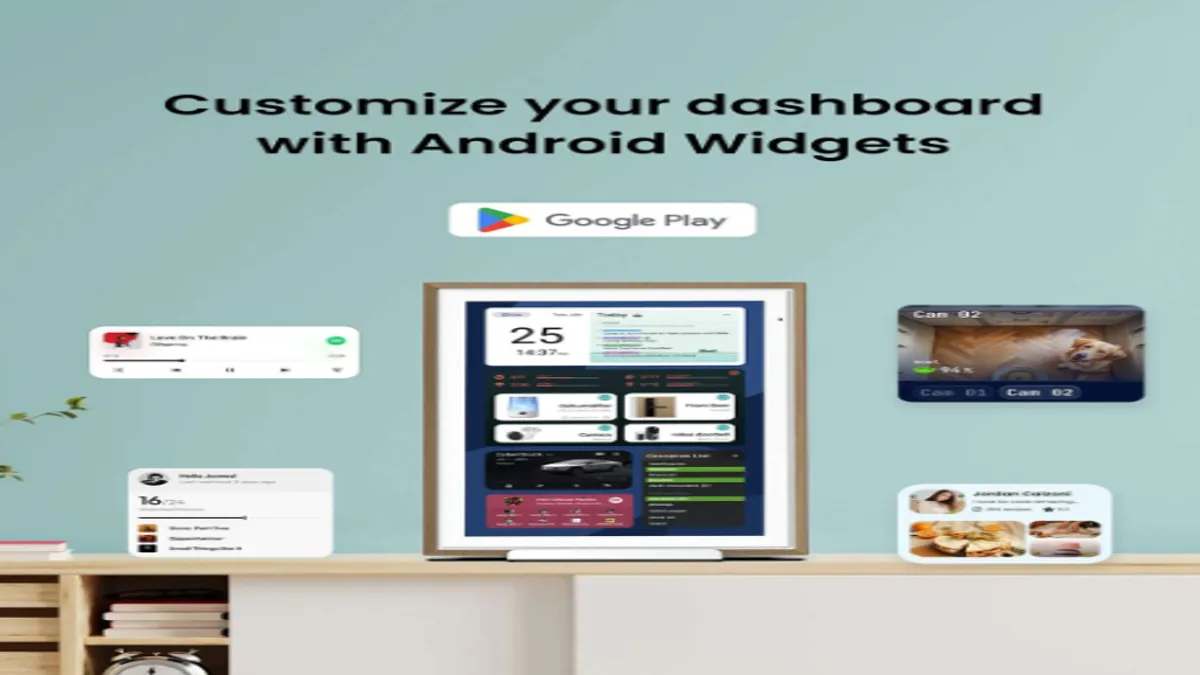Managing a busy family schedule can feel like juggling flaming torches while riding a unicycle. Between work commitments, school activities, sports practices, doctor appointments, and social events, keeping everyone on the same page becomes a daily challenge. Missed appointments, double-booked calendars, and last-minute scrambles are all too common in modern households. Traditional paper calendars and scattered digital reminders simply can’t keep up with the complexity of coordinating multiple family members’ lives. This is where digital calendar display solutions step in as a game-changing approach. Designed specifically to address the chaos of family scheduling, these systems transform how households communicate and coordinate their daily activities. By bringing all family schedules together in one visible, accessible place, they eliminate confusion and create a seamless flow of information. Whether you’re a parent trying to track your children’s activities or a household looking to synchronize everyone’s commitments, modern digital calendar displays offer an intuitive approach to family organization that actually works in real-world situations.
Simplifying Family Coordination
The foundation of effective family coordination lies in visibility and accessibility. When everyone can see what’s happening at a glance, the mental burden of remembering every detail disappears. Digital calendar displays address this by creating a central visual hub that displays your family’s entire schedule in real-time. Instead of texting back and forth about who needs to be where, family members simply check the display to see upcoming commitments. This immediate visibility reduces the constant questions and clarifications that typically consume family communication time.
The system works by syncing with your existing digital calendars and presenting the information on a dedicated display screen positioned in a high-traffic area of your home. Morning routines become smoother when everyone can check the day’s schedule while having breakfast. Parents can quickly verify pickup times, children can see their after-school activities, and the entire household stays aligned without requiring constant verbal reminders. This visual approach particularly benefits children who are learning time management skills, as they can independently check their responsibilities and develop autonomy.
Beyond just displaying events, digital calendar systems help families proactively manage conflicts and plan ahead. When you can see the entire week or month laid out visually, spotting scheduling overlaps becomes immediate rather than discovering them at the last moment. This foresight allows families to make adjustments, arrange carpools, or shift commitments before problems arise, transforming reactive crisis management into proactive planning that keeps household operations running smoothly.
The Digital Calendar Display
At its core, a digital calendar display functions as a sophisticated system that transforms how families interact with their schedules. Unlike smartphone calendars that require unlocking devices and opening apps, these displays present information on an always-visible screen that becomes part of your home environment. The screen can be mounted in kitchens, mudrooms, or hallways where family members naturally gather, ensuring schedule information is always within eyesight during daily routines.

The calendar interface displays events in a clean, easy-to-read format that accommodates multiple family members simultaneously. Color-coding helps distinguish between different people’s activities at a glance—perhaps blue for Dad’s work meetings, green for Mom’s appointments, yellow for soccer practice, and purple for music lessons. This visual differentiation means you can instantly identify whose schedule you’re looking at without reading detailed text. The system also highlights conflicts when two family members have overlapping commitments, alerting you to potential transportation or coverage issues before they become problems.
What makes these systems particularly powerful is their ability to sync seamlessly with the digital calendars your family already uses. Whether you rely on Google Calendar, Apple Calendar, Outlook, or other popular platforms, the display pulls all this information together into one unified view. Updates made on your phone automatically appear on the home display within moments, ensuring the information is always current. This eliminates the tedious task of manually updating multiple calendars or transferring information between systems.

The calendar also supports different viewing modes to match your family’s needs. A daily view provides detailed hour-by-hour breakdowns perfect for busy weekdays, while weekly and monthly views help with longer-term planning and identifying patterns in your schedule. Families can switch between these views based on what they need to see, whether it’s confirming this afternoon’s carpool schedule or planning next month’s vacation around everyone’s commitments. This flexibility ensures the tool adapts to your family’s rhythm rather than forcing you to adapt to rigid technology.
Centralized Tool for Home Hub
A digital calendar display transforms a strategic location in your home into a command center that orchestrates family life. The concept of a home hub goes beyond simply displaying a calendar—it creates a dedicated space where information flows naturally and family members instinctively turn for guidance. Placing the display in your kitchen, entryway, or family room establishes a consistent reference point that becomes embedded in daily routines. This centralization eliminates the scattered approach where information lives on different phones, sticky notes on the refrigerator, and verbal reminders that may or may not be remembered.
The physical presence of a home hub changes family behavior in subtle but meaningful ways. When schedule information exists only on individual phones, each person operates in their own information silo, unaware of others’ commitments until conflicts arise. A centralized display makes everyone’s schedule visible to the entire household, fostering awareness and consideration. Family members naturally begin checking the hub before making plans, asking friends over, or committing to new activities. This shared visibility encourages collaborative decision-making rather than isolated choices that create coordination problems later.
The home hub also serves as a gathering point for family discussions about upcoming events and planning sessions. Instead of trying to coordinate schedules through fragmented conversations happening at different times, families can stand together in front of the display and work through logistics as a team. This visual collaboration makes it easier to identify solutions—who can handle which pickup, whether carpooling makes sense, or if certain activities need rescheduling. The hub becomes not just an information display but a tool that facilitates better family communication and joint problem-solving.
Enhanced Communication
Effective family coordination depends on communication that actually reaches everyone when it matters most. Digital calendar displays enhance how families share information by making messages visible in a space where they can’t be missed. Rather than relying on text messages that get buried in notification streams or verbal reminders that are forgotten minutes later, the system displays important notes and updates directly on the home hub screen alongside calendar events. A parent can add a message about early dismissal from school, a reminder to grab soccer cleats, or a note that dinner will be late, and everyone who passes by the display sees it immediately.
This visibility is particularly valuable for time-sensitive information that needs to reach the entire household quickly. When plans change unexpectedly, updating the display ensures everyone gets the message without requiring individual phone calls or texts to each family member. The system can highlight urgent updates or changes to scheduled events, drawing attention to modifications that might otherwise be overlooked. This real-time communication capability reduces the frustration of missed messages and ensures critical information doesn’t fall through the cracks during hectic days.
The communication features also support leaving notes for specific family members while maintaining household-wide visibility. A parent heading to work early can leave pickup instructions for a teenager, or kids can notify parents about permission slips that need signing. These messages remain visible until acknowledged, creating accountability and reducing the “I didn’t know” excuses that often accompany missed responsibilities. By combining scheduling information with direct messaging in one location, digital calendar displays create a comprehensive communication system that keeps families connected and informed throughout their busy days.
Ease of Use
Digital calendar display systems succeed where many family organization tools fail because they prioritize simplicity over complexity. Setting up the system requires minimal technical knowledge—mount the display in your chosen location, connect it to your home WiFi network, and link your existing calendar accounts through a straightforward setup wizard. The entire process takes less than thirty minutes, and the intuitive interface guides you through each step with clear instructions. Once configured, the system runs automatically in the background, syncing calendar updates without requiring ongoing maintenance or technical troubleshooting.
Daily interaction with these displays feels natural rather than burdensome. Family members don’t need to learn complicated commands or navigate through multiple menus to access information. The display shows relevant information automatically based on the time of day and upcoming events. Touchscreen controls allow quick adjustments when needed—tapping an event reveals additional details, swiping changes between calendar views, and adding quick notes takes just seconds. This intuitive design means even young children and less tech-savvy family members can engage with the system confidently, ensuring everyone benefits from improved coordination regardless of their comfort level with technology.
Integration with Other Tools
The true strength of digital calendar displays emerges through their ability to work harmoniously with the digital tools your family already relies on daily. Systems like ApoloSign digital calendar connect with major calendar platforms including Google Calendar, Apple iCloud, Microsoft Outlook, and other popular services, pulling events from multiple sources into one unified display. This integration means you don’t need to abandon familiar tools or convince everyone to switch to a new platform. Each family member continues using their preferred calendar app on their phone or computer, while the display automatically aggregates everything for household-wide visibility. These systems also support integration with smart home devices and voice assistants, allowing you to update schedules through voice commands or receive calendar notifications through connected speakers. This ecosystem approach ensures your digital calendar display enhances your existing digital infrastructure rather than creating another isolated tool that requires separate management and attention.

Transforming Family Life Through Digital Coordination
Family coordination doesn’t have to be a source of constant stress and confusion. Digital calendar display systems address the fundamental challenge that modern households face—too many schedules, too little visibility, and communication that gets lost in the noise of daily life. By creating a centralized visual hub that displays everyone’s commitments in one accessible location, they eliminate the guesswork and mental gymnastics that typically accompany family scheduling. The seamless integration with existing digital calendars means you gain powerful coordination capabilities without disrupting the tools and workflows your family already uses. From morning routines that flow smoothly because everyone knows the day’s plan, to proactive conflict resolution that prevents last-minute crises, these systems transform chaotic household management into organized efficiency. Families who implement this approach discover they spend less time managing logistics and more time enjoying each other’s company. The result is a calmer, more connected household where everyone stays informed, responsibilities are clear, and the daily challenge of keeping life organized becomes genuinely effortless.







